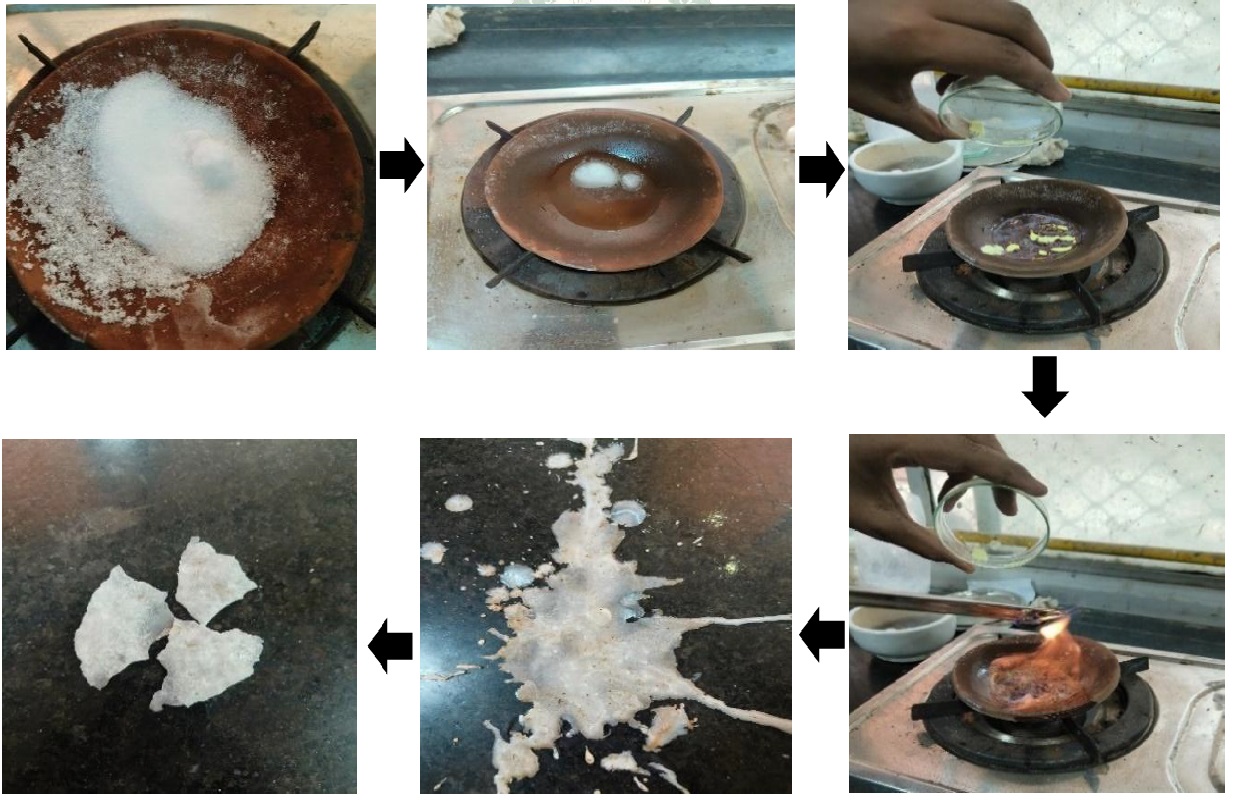Pharmaceutical Preparation and Preliminary Analysis of Shweta Parpati Mentioned in Different Classics
Abstract
Rasa Shastra, a crucial branch of Ayurveda, emphasizes the therapeutic applications of herbo-mineral and metallic preparations. Shweta Parpati (SP), mentioned in many Ayurvedic classics, is renowned for treating conditions such as Mutrakricchra (urinary problems), Ashmari (renal stones), Yakritvikara (hepatic disorders) etc. This study aims to prepare and evaluate five different samples of SP based on classical references to ensure their quality and difficulties in pharmaceutical preparation. Materials and Methods: Five methods selected from texts like Siddhabheshajamanimala (SBM), Bhaishajya ratnavali (BR), Rastantrasaar & Siddhaprayoga Sangraha (RTSSPS), Siddhayogasangraha (SYS), Rasoddharatantra (RDT) were followed, utilizing Suryakshara (potassium nitrate), Sphatika (potash alum), Gandaka (sulphur), Navasadara (ammonium chloride), Tankana (borax), Karpura (camphor), and Gandaka ka shudda tijab (sulfuric acid) in different proportions, pharmaceutical steps, and ingredient combinations. Ingredients were meticulously processed, heated, and solidified under controlled conditions. Yield and analytical parameters of each formulation were recorded according to API reference. Results: SBM reference produced brittle flakes with brownish spots, yielding 71.42%. BR resulted in very hard flakes with 54.66% yield. RTSSPS achieved thin, brittle flakes with nearly 89.77% yield. SYS produced hard flakes, yielding 73.68%. RDT yielded arduous flakes with a 69.85% yield. Analytical results showed significant variations in physicochemical properties, highlighting the diverse impacts of these traditional texts on preparation techniques. Conclusion: Standardizing these methods is essential to ensure consistency and reliability in clinical applications. Future research should focus on refining these techniques and exploring their clinical benefits in more depth.
Downloads

Copyright (c) 2024 International Journal of Ayurveda and Pharma Research

This work is licensed under a Creative Commons Attribution-NonCommercial-ShareAlike 4.0 International License.






